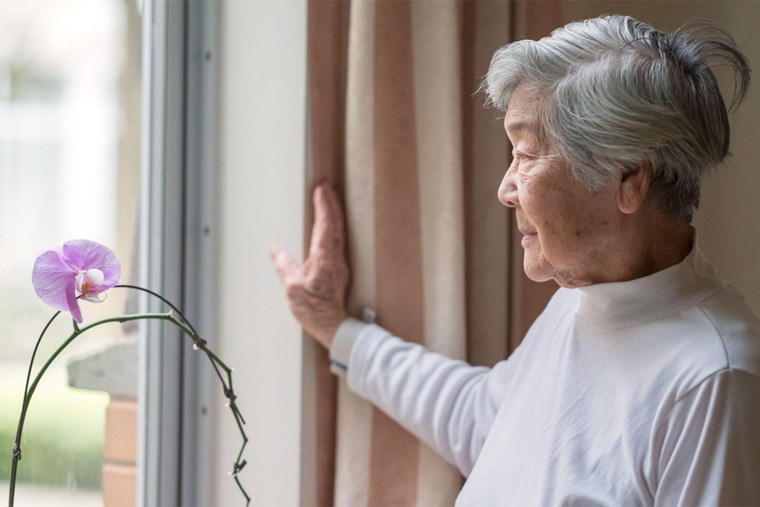As the days get shorter and colder and we welcome the festivities of fall, many older adults notice that they experience a change in energy levels and mood that feels like depression. If you’ve noticed a decline in your mental health when the seasons change, you’re not alone. Here’s a basic guide to understanding seasonal depression, its symptoms, and most importantly, how to cope with its effects so that you can take charge of your health.
Changing Seasons, Changing Mood
Many people experience some form of mood change as seasons shift from summer to fall. When there are fewer daylight hours and it’s colder, it’s harder to get outside and help our bodies naturally regulate our circadian clock using signals from nature. In addition, a lack of sunlight may deplete our Vitamin D stores, which may also lead to low energy levels and decrease our serotonin levels (a brain chemical that helps us regulate our mood). If you’ve noticed that you feel sadder, have trouble sleeping, have low energy, or experience a lack of motivation, you may be experiencing seasonal mood changes.
What is Seasonal Affective Disorder (SAD)?
Whether your seasonal mood changes are dubbed “winter blues” or the more serious Seasonal Affective Disorder (SAD) is a matter of degree and duration. In general, winter blues last a shorter period of time and do not interfere with your ability to complete regular daily functions.
As explained by the Canadian Psychological Association (CPA):
“Seasonal Affective Disorder (SAD), or Depression with Seasonal Pattern, is a condition that comes and goes based on seasonal changes, appearing in the fall and going away in the spring/summer. This diagnosis should only be considered when the feeling is beyond the “winter blues” due to the lack of engagement in typical hobbies and/or outdoor activities due to weather. Seasonal Affective Disorder can also occur during spring and summer although it is not as common to experience SAD during the warmer seasons.
It is estimated that SAD makes up 10% of all reported cases of depression. Approximately 15% of Canadians will report at least a mild case of SAD in their lifetime, while 2%-3% will report serious cases. People with a family history of any form of depression may also be at risk of developing SAD. Canadians are particularly at risk, as we have decreased sunlight during the winter months.”
Fortunately, those suffering from seasonal depression have many treatment options available, both in consultation with a doctor and on your own at home. Here’s how to make your mental wellness a priority during this season.
Light Therapy (Natural AND Artificial)
One of the most important tools for combating seasonal depression is light. Increase your exposure to light, and many of your symptoms may dramatically improve.
As per the CPA, “Research has found benefits from exposure to sunlight within one hour from waking up in the morning, particularly for people with SAD. You can sit beside a window, keep your blinds open when you are home, trim branches that block light on your property, or take frequent walks outside with proper UV protection.”
If you can, take advantage of the morning hours outside and soak up as much natural light as possible. To supplement, buy a lightbox that’s designed to mimic outdoor light while minimizing UV rays. Using the lightbox for 20-30 minutes in the morning can help restore your body’s natural rhythms and increase serotonin levels. Know that certain eye conditions and medications can make you sensitive to light therapy, so be sure to check with your doctor before using a lightbox.

Stay Social
Creating and sticking to a regular social routine is one of the best ways to combat seasonal depression.
“Keep in regular contact with family and friends, both in person and via electronic means. These networks can provide opportunities to socialize and refresh your mood,” advises the CPA.
Get Regular Exercise
Regular physical activity can help regulate your body’s rhythms and boost your mood by flooding your brain with endorphins. Increased physical activity improves quality of life in older adults, so regular exercise is a great way to maintain your mental and emotional wellbeing even if you’re not battling seasonal depression. If you aren’t able to engage in vigorous physical activity, try low-impact classes like yoga to get the same benefits.
Focus on Nutrition
Focusing on your nutrition during bouts of seasonal depression is essential. Although you may crave more carbohydrates, make sure that you’re incorporating enough whole grains and vegetables to keep you feeling full and give you plenty of energy. To help combat lower levels of Vitamin D during these times, choose foods that are high in this nutrient, including fish and fortified grains. You may also need to add a supplement to your routine.
These wellness routines are a great way for active adults to stay holistically fit during the shift from summer to fall, so whether or not you’ve experienced seasonal depression in the past, try to incorporate these practices into your life today! And, of course, if you’re experiencing symptoms of seasonal depression, make sure to talk with your doctor about the best treatment options available to you.
 This story was made possible by our Community Partners Program. Thank you Didsbury Dental for helping to expand local news coverage in Alberta. Learn more.
This story was made possible by our Community Partners Program. Thank you Didsbury Dental for helping to expand local news coverage in Alberta. Learn more.


